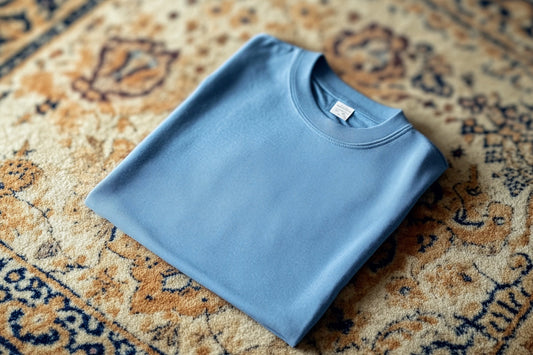
How to Grow Supima Cotton – From Seed to Softness
Share
Ever slipped into a Supima cotton T-shirt and wondered, Wow, how do they make this stuff so soft? Well, it all starts in the soil—with care, patience, and a little bit of farming magic.
If you’re curious about how Supima cotton is grown, let’s walk through it in simple, down-to-earth steps. 🌱
First Things First – What Makes Supima Special?
Before we talk farming, let’s get one thing clear: Supima cotton is no ordinary cotton. It’s made from extra-long staple (ELS) fibers, which are smoother, stronger, and softer than regular cotton. And here’s the real deal—it’s only grown in the United States, mostly in sunny states like California, Texas, Arizona, and New Mexico.
Now, let’s get growing.
Step 1: Start With the Right Seeds
Supima cotton isn’t just a name—it’s a licensed variety of Pima cotton, and only farmers approved by the Supima Association can grow it. These seeds are selected for their superior fiber quality.
You can’t just grab these from any seed store—it’s about quality control from day one.
Step 2: Prepare the Soil
Supima cotton thrives in well-drained, nutrient-rich soil. Farmers prepare the fields by tilling and enriching the soil with organic matter or fertilizers to give the seeds the best shot at healthy growth.
Good soil = good cotton. Simple as that.
Step 3: Planting the Seeds
Planting usually happens in spring, when the soil warms up. The seeds are placed in neat rows, spaced properly to give each plant room to grow strong and tall.
Timing is everything—too early or too late, and the crop may not thrive.
Step 4: Watering With Care
Supima cotton loves warm weather, but like all plants, it needs water. In places like Arizona or California, drip irrigation is commonly used to save water while delivering just the right amount of moisture to the roots.
Too much water? The roots can rot. Too little? Growth slows. It’s all about balance.
Step 5: Pest and Weed Management
Like any crop, Supima cotton has its enemies—pests and weeds. But many farmers opt for integrated pest management and sustainable practices to protect the crop while being kind to the environment.
Healthy cotton doesn’t need harsh chemicals when grown with care.
Step 6: Harvest Time
Around fall, when the cotton bolls burst open, it’s time to harvest. Machines gently pick the cotton, separating the fibers from the plant. The long, silky fibers are what eventually become Supima fabric.
After harvesting, the cotton is ginned to remove seeds and cleaned before it heads to mills to be spun into yarn.
And That’s How Supima Cotton Is Grown
From a single seed in U.S. soil to the soft tee in your closet, Supima cotton’s journey is one of quality and care. It's not fast or easy—but that’s what makes it special.
At Offnorth.com, we choose Supima cotton because we believe in clothing that starts with integrity and ends in comfort.
















































